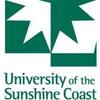| Title | Adaptive Environmental Assessment and Management |
| Publication Type | Book |
| Year of Publication | 1978 |
| Authors | Holling C.S. |
| Publisher | Wiley |
| City | Chinchester, USA |
| Full Text |
Adaptive Environmental Assessment and Management
Annotation for Adaptive Environmental Assessment and Management
Holling C.S.. 1978. Adaptive Environmental Assessment and Management.
Aim/objectives:
Describes an alternative approach to environmental assessment, recognising that uncertainty cannot always be resolved and therefore the need for management to learn from actions.
Geographic Focus:
Methods:
Key Findings:
This is a core book in instigating the adaptive management movement. It reports on the findings from a workshop at the International Institute for Applied Systems Analysis in Vienna, Austria. In the first chapter, Hollings presents myths of modern environmental assessment, wherein stable policy, the consideration of the environment after social and economic considerations, and the need (and utility) of detailed science are challenged, given the view of nature as a shifting target for managers. Holling argues that scientists and managers should come together to share existing knowledge, identify uncertainties, consider multiple possible management options, evaluate these options using ecological models, monitor (i.e. by treating policy implementation and management actions as experiments), and adapt management on the basis of newly gained information. The remainder of the book details assessment and workshop procedures, and provides a diversity of case studies in which the approach was applied. Hollings’s emphasis is on mathematical modelling and experimentation (including ‘treatment’ and ‘non-treatment’ study sites). The concept of adaptive management has advanced in two directions since this book was published. Firstly, computer power has increased dramatically, enabling massive advances in tools and techniques for model development and policy simulation capacity (e.g. fisheries assessment and management). Secondly, much greater understanding has been gained about how to include non-specialist input into the process of assessing what is known, and about the institutional challenges for adaptive management.
Lessons:
There are two key lessons that are relevant to adaptive learning. First is the notion of domains of attraction. Essentially, Holling argues for an alternative world view to the one that underpins (or underpinned) environmental management – i.e. that systems, outside of undue human influence, are in equilibrium, that there is a singular point of ‘balance’. Instead, he argues that systems have multiple ‘domains of attraction’ and that processes can cause system flips from one domain to another. These domains are also shifting. Second, Holling contributes the notion of models to adaptive learning. Although he argues for the use of mathematical models, the point is that all models, whether mathematical, a graphic of the relationship between two or more variables, or a series of boxes and arrows, represent assertions about how the ‘world,’ relevant to the learning task at hand, works. Thus, models make assumptions explicit and testable. Models are also a useful means to capture different views of what is occurring, and a way to link these different views together to form a shared understanding of a situation, given that they enable points of disagreement between different stakeholders to be easily identified.









